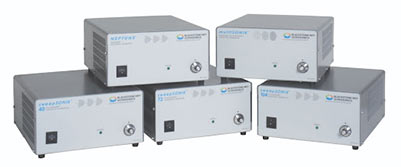Cleaning methods are as varied as the types of surfaces, substrates, and particles that exist. Not only is it important to consider all of these factors, it is necessary to think about how particles not only adhere to substrates, but also interact with and attach to each other. This is why there is no one-size-fits-all type of cleaning approach that works for every application.

The Mechanics of Cleaning
The mechanics of cleaning involve the removal of either soluble or insoluble contaminants, or a combination of both. Ultrasonic cleaning is the preferred method for the removal of soluble contaminants and particles that are less than approximately 6mm in size.
The cleaning process begins by establishing contact with particles to physically displace them. As ultrasonic vibrations travel through the liquid that washes over the surface area of the object being cleaned, a sufficient degree of “wetting” must occur. Wetting refers to the ability of a liquid to maintain contact with a solid surface, resulting from intermolecular interactions when the liquid and surface are brought together. High surface tension may interfere with wetting and the required connection between the energy and the particle.
Ultrasonic Cavitation & Implosion
Sufficient energy is required to physically break the bond holding contaminants in place on the part surface. The degree of energy needed depends on the size of the particle. As one might expect, the removal of small particles requires less energy than that of larger particles.
The amount of energy released by the implosion of a cavitation bubble depends on its size which similarly relates to the ultrasonic frequency. Higher ultrasonic frequency creates smaller cavitation bubbles which implode releasing less energy. While it may seem like using low frequency to provide maximum implosion energy release would be effective for removing both large and small particles, a phenomenon called “barrier layer” must be considered.
The Barrier Layer
A barrier layer is formed when larger cavitation bubbles are unable to form. This happens when surfaces are very near. If a particle is smaller than the thickness of the barrier layer, it will not be displaced by the implosion of a cavitation bubble that is further away from the surface to be cleaned. For this reason, higher frequencies are more effective in the removal of smaller particles, and lower frequencies are effective for removing larger particles.
CTG is the Industry Leader in Ultrasonic Cleaning Equipment
CTG is the parts cleaning industry’s trusted source, supplying industrial parts washers and custom ultrasonic cleaning solutions to industrial and precision parts manufacturers. We've had experience with nearly every kind of parts cleaning application. Our team will help you meet your cleaning needs with the latest cleaning technology available.



 English
English Spanish
Spanish Chinese
Chinese Canada
Canada Mexico
Mexico United Kingdom
United Kingdom




